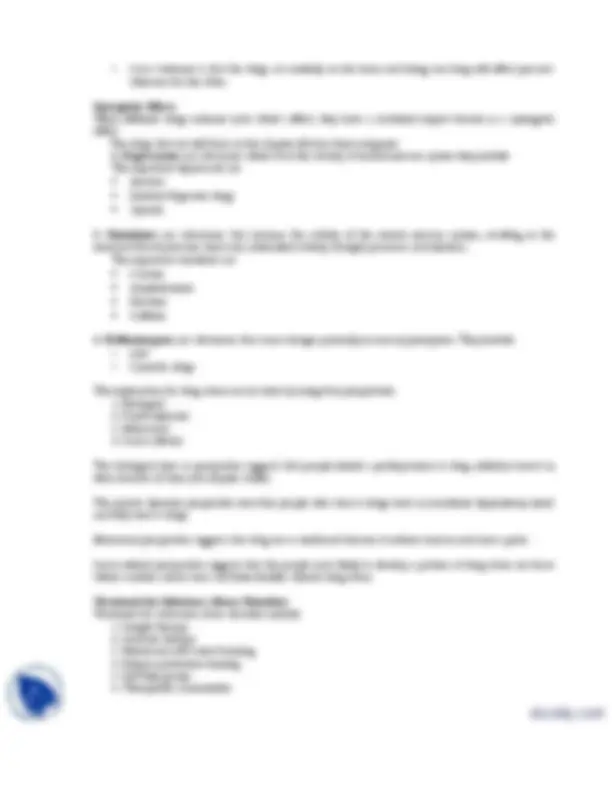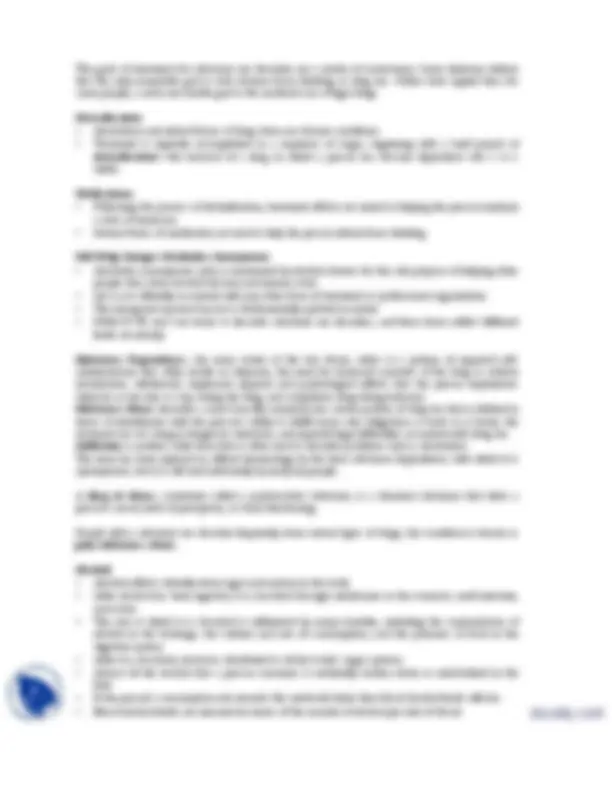





Study with the several resources on Docsity

Earn points by helping other students or get them with a premium plan


Prepare for your exams
Study with the several resources on Docsity

Earn points to download
Earn points by helping other students or get them with a premium plan
Community
Ask the community for help and clear up your study doubts
Discover the best universities in your country according to Docsity users
Free resources
Download our free guides on studying techniques, anxiety management strategies, and thesis advice from Docsity tutors
An overview of personality disorders and substance use disorders, including their classification, causes, and treatment. The enduring patterns of behavior and emotion that define personality disorders, the different forms of substance use disorders, and the various perspectives on the causes of substance abuse. It also discusses the treatment options for substance use disorders, such as insight therapy, aversive therapy, behavioral self-control training, relapse prevention training, and self-help groups.
Typology: Exercises
1 / 5

This page cannot be seen from the preview
Don't miss anything!




Personality refers to enduring patterns of thinking and behavior that define the person and distinguish him or her from other people. These enduring patterns are ways of expressing emotion as well as patterns of thinking about ourselves and other people. When enduring patterns of behavior and emotion bring the person into repeated conflict with others, and when they prevent the person from maintaining close relationships with others, an individual’s personality may be considered disordered.
The authors of DSM-IV-TR have organized ten specific forms of personality disorder into three clusters on the basis of broadly defined characteristics.
Classification of Personality Disorders 1-Paranoid personality disorder 2-Schizoid personality disorder 3-Schizotypal personality disorder 4-Antisocial personality disorder 5-Borderline personality disorder 6-Histrionic personality disorder 7-Narcissistic personality disorder 8-Avoidant personality disorder 9-dependent personality disorder 10-Obsessive–compulsive personality disorder
Alcoholism and Substance Related Disorders
Examples
There are many substances that are capable of harming the body or adversely affecting the behavior and mood. The misuse of drugs has become one of the most disabling problems of the society. Examples
The term drug applies to any substance other than food that changes our bodily and mental functioning. Drug misuse may lead to a temporary mental syndrome such as intoxication but chronic excessive use of drugs can lead to a substance use disorder.
Substance use disorder can take two forms 1- Substance abuse 2- Substance dependence
1- Substance Abuse A pattern in which people rely heavily on a drug and they structure their lives around the drug.
2- Substance Dependence In which people show all symptoms of substance abuse plus physical dependence on the drug.
Drug Addiction
Drug Tolerance
Poly Drug Use When an individual uses two or more drugs at the same time we label it as poly drug use.
Cross Tolerance
The goals of treatment for substance use disorders are a matter of controversy. Some clinicians believe that the only acceptable goal is total absence from drinking or drug use. Others have argued that, for some people, a more reasonable goal is the moderate use of legal drugs.
Detoxification
Medications
Self-Help Groups: Alcoholics Anonymous
Substance Dependence, the more severe of the two forms, refers to a pattern of repeated self- administration that often results in tolerance, the need for increased amounts of the drug to achieve intoxication; withdrawal, unpleasant physical and psychological effects that the person experiences when he or she tries to stop taking the drug; and compulsive drug-taking behavior. Substance Abuse describes a more broadly conceived, less severe pattern of drug use that is defined in terms of interference with the person’s ability to fulfill major role obligations at work or at home, the recurrent use of a drug in dangerous situations, and repeated legal difficulties associated with drug use. Addiction is another, older term that is often used to describe problems such as alcoholism. The term has been replaced in official terminology by the term substance dependence, with which it is synonymous, but it is still used informally by many lay people.
A drug of abuse, sometimes called a psychoactive substance, is a chemical substance that alters a person’s mood, level of perception, or brain functioning.
People with a substance use disorder frequently abuse several types of drugs; this condition is known as poly-substance abuse.
Alcohol